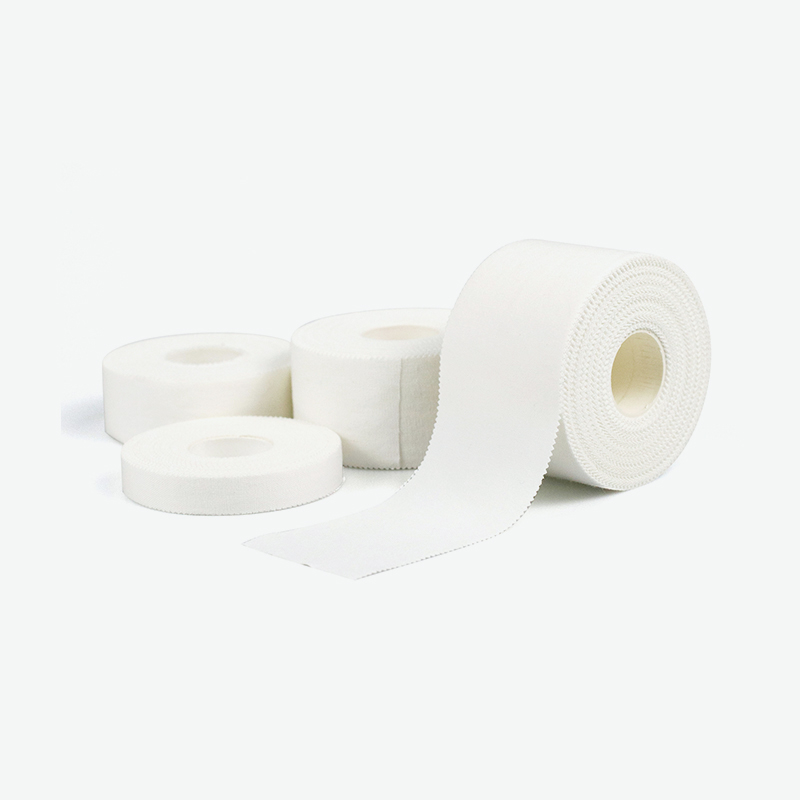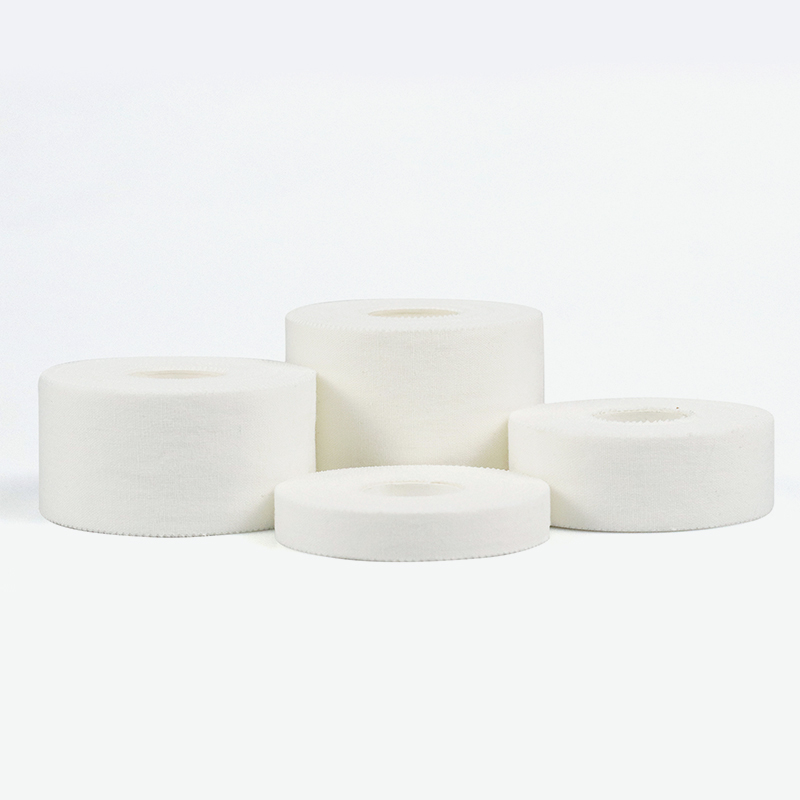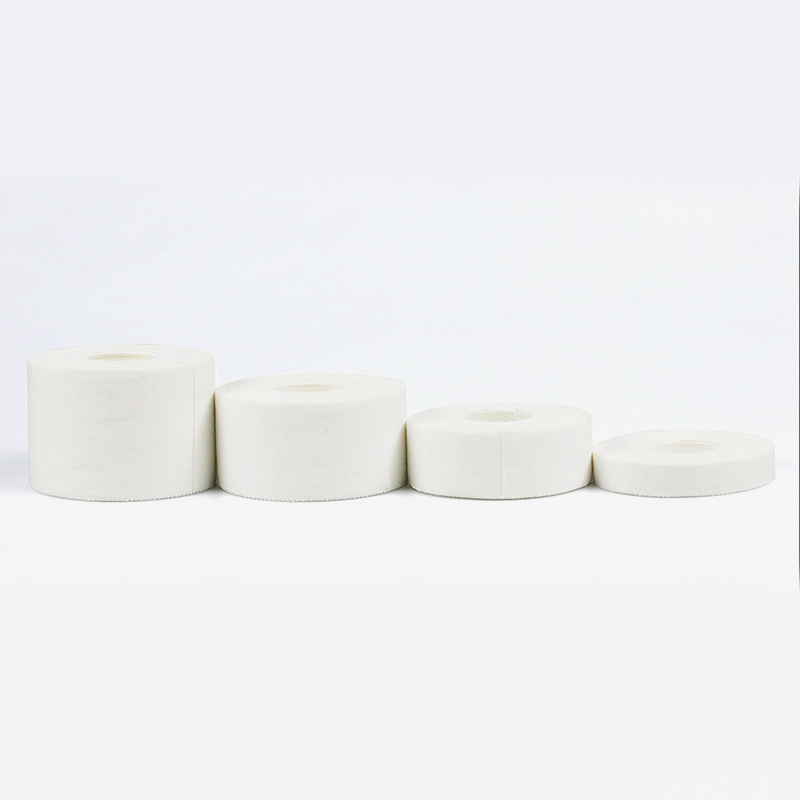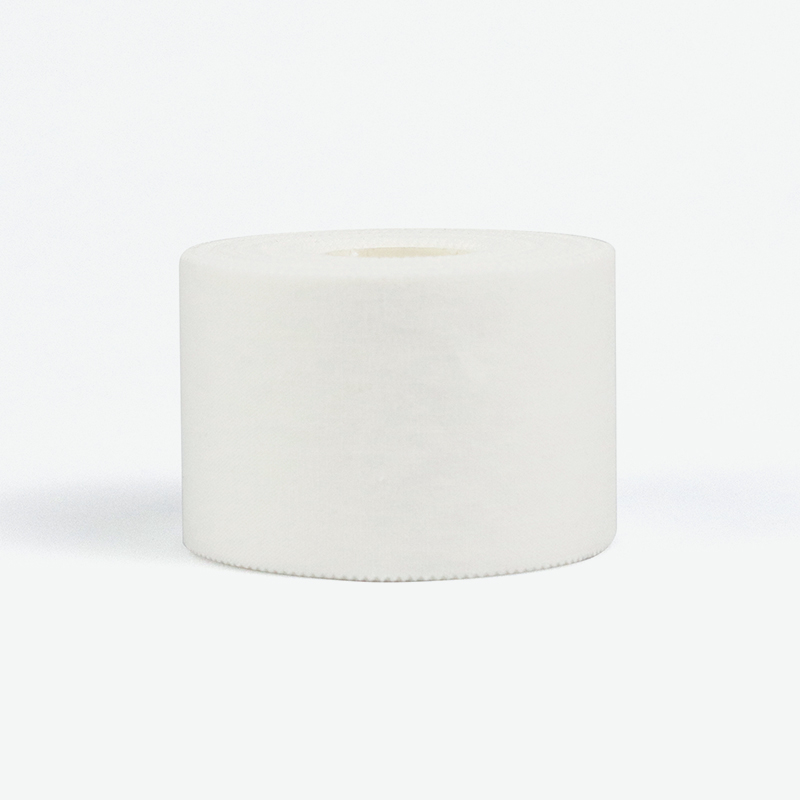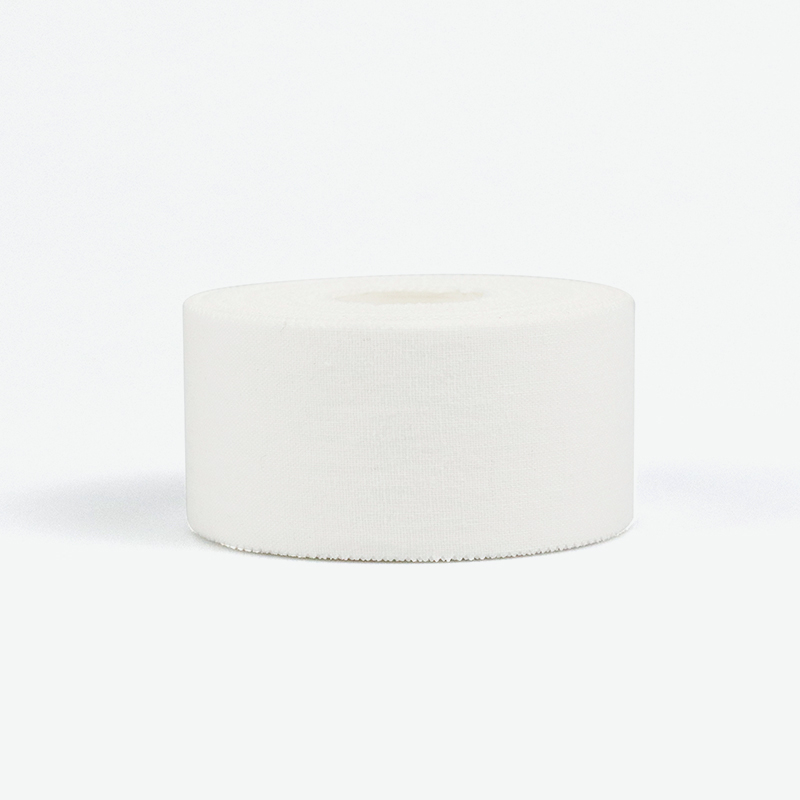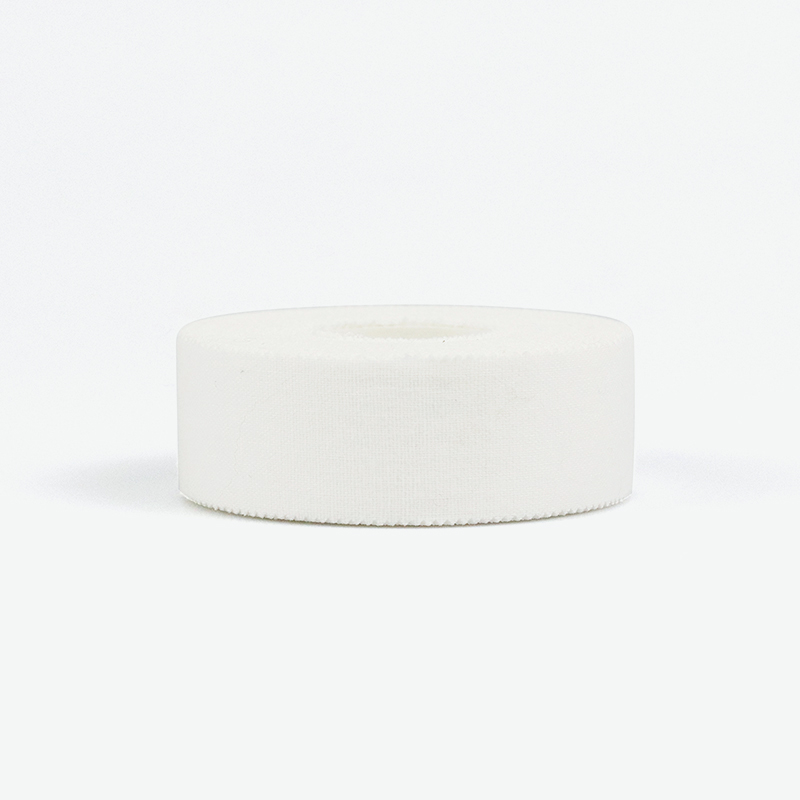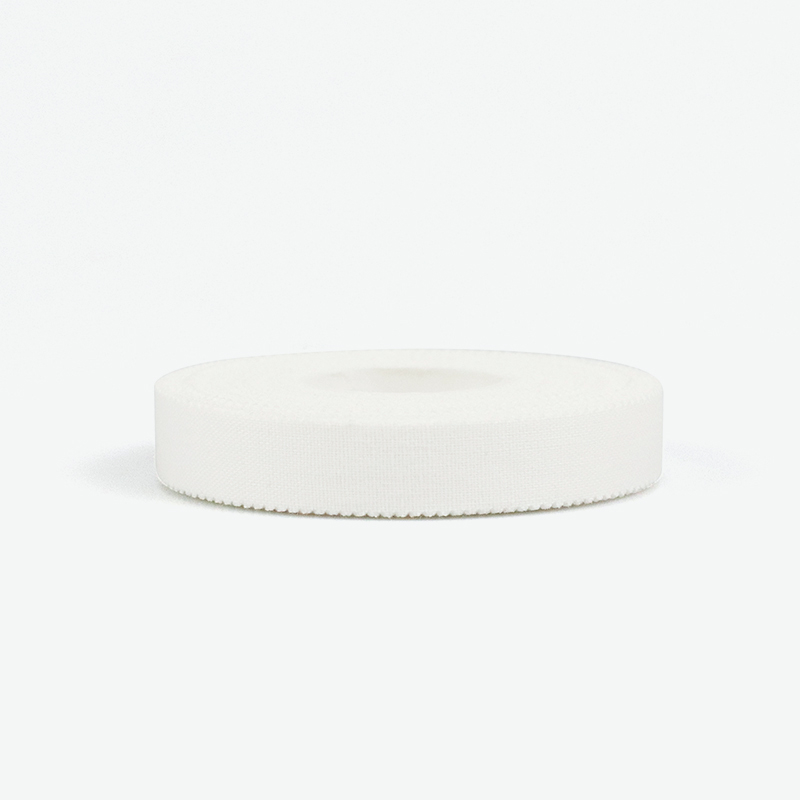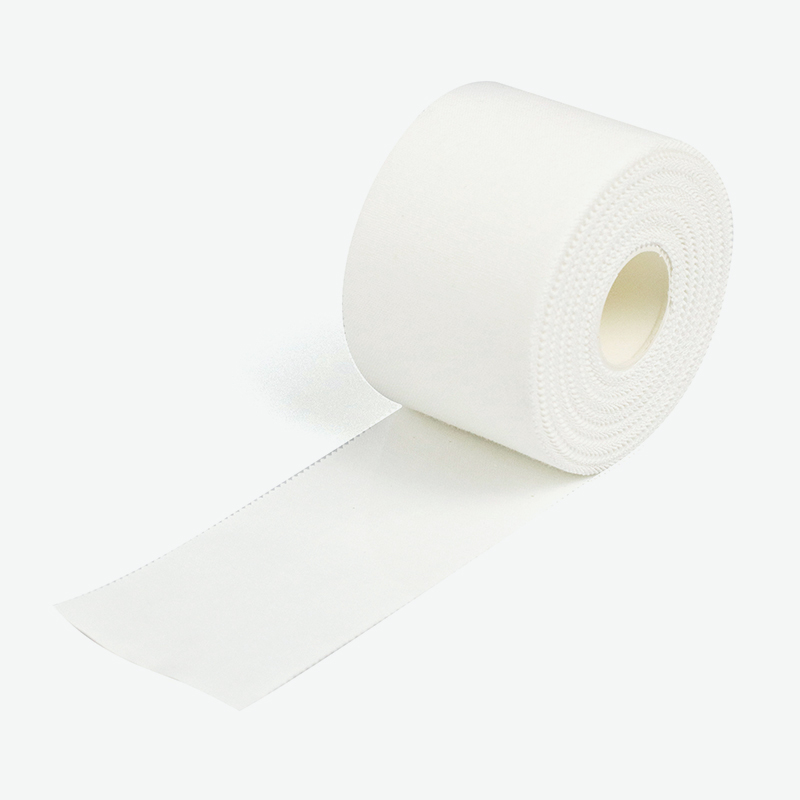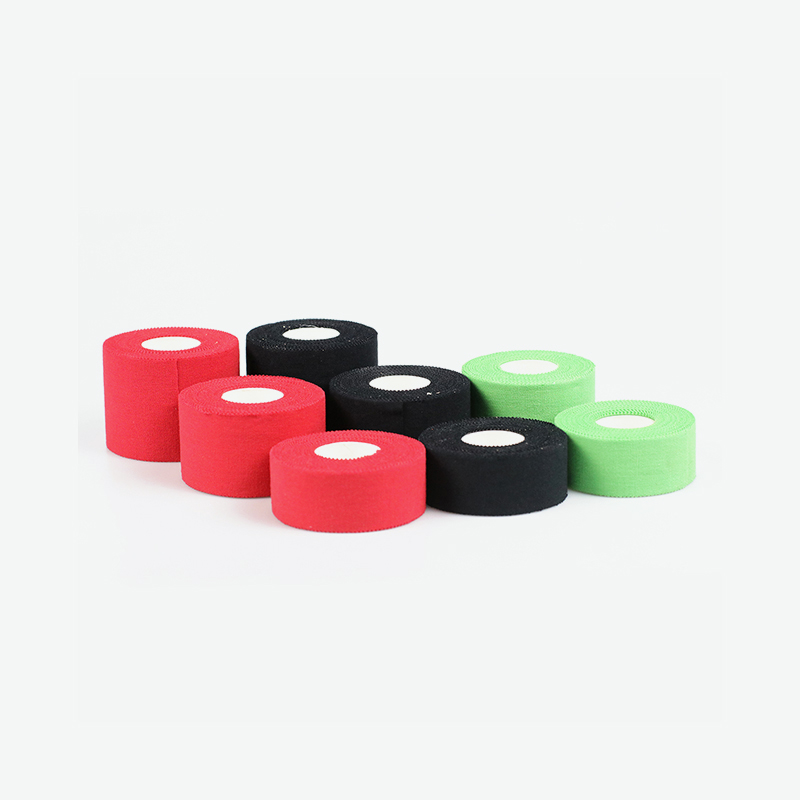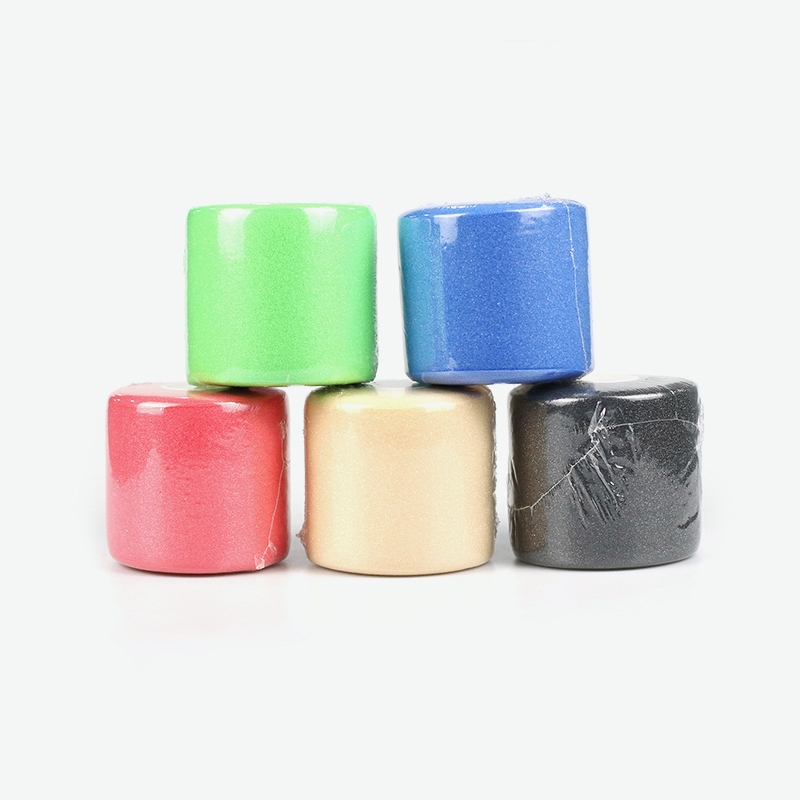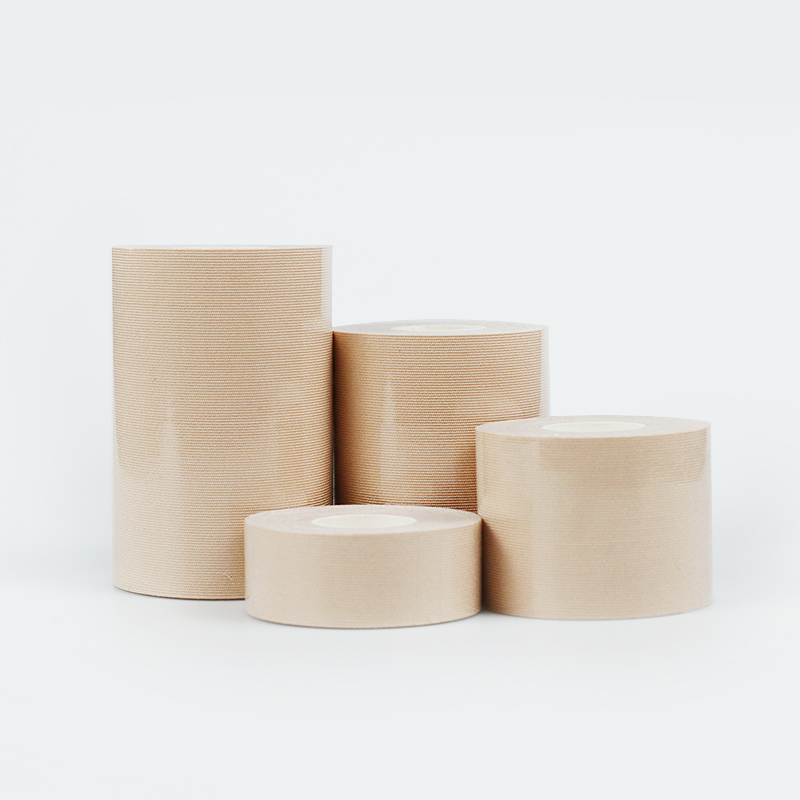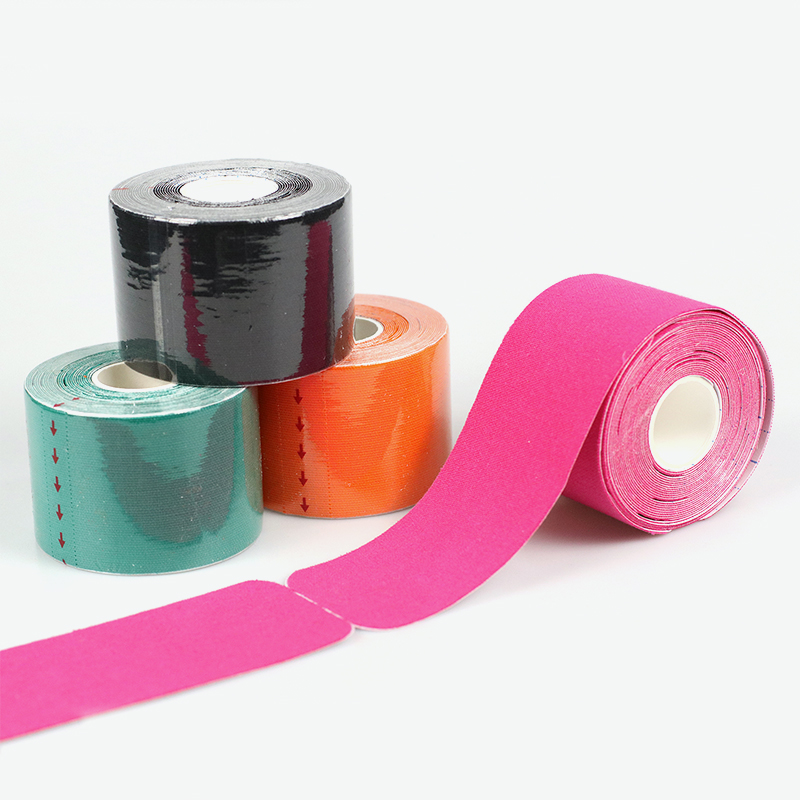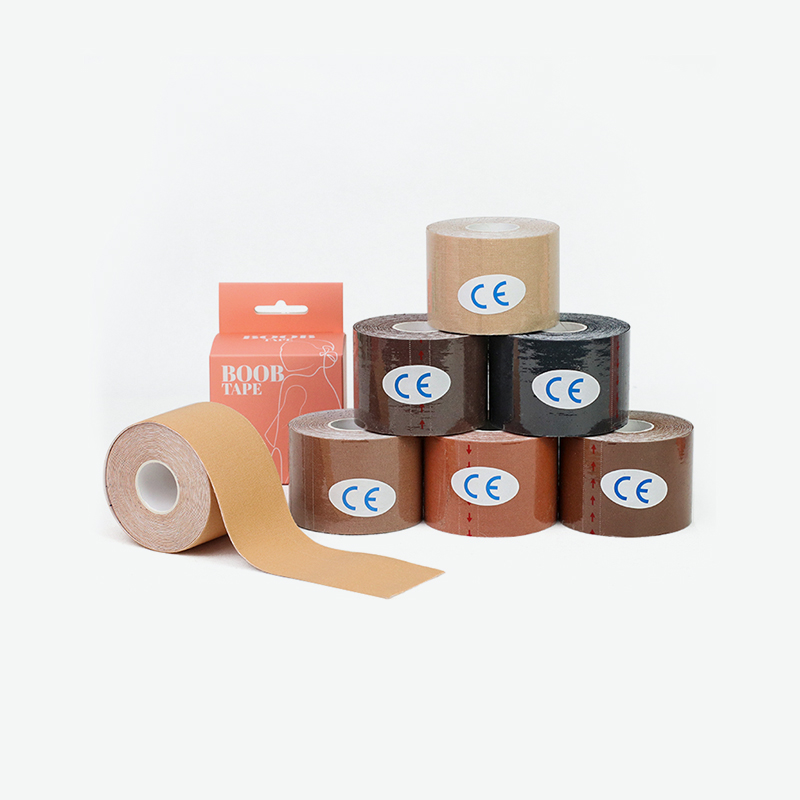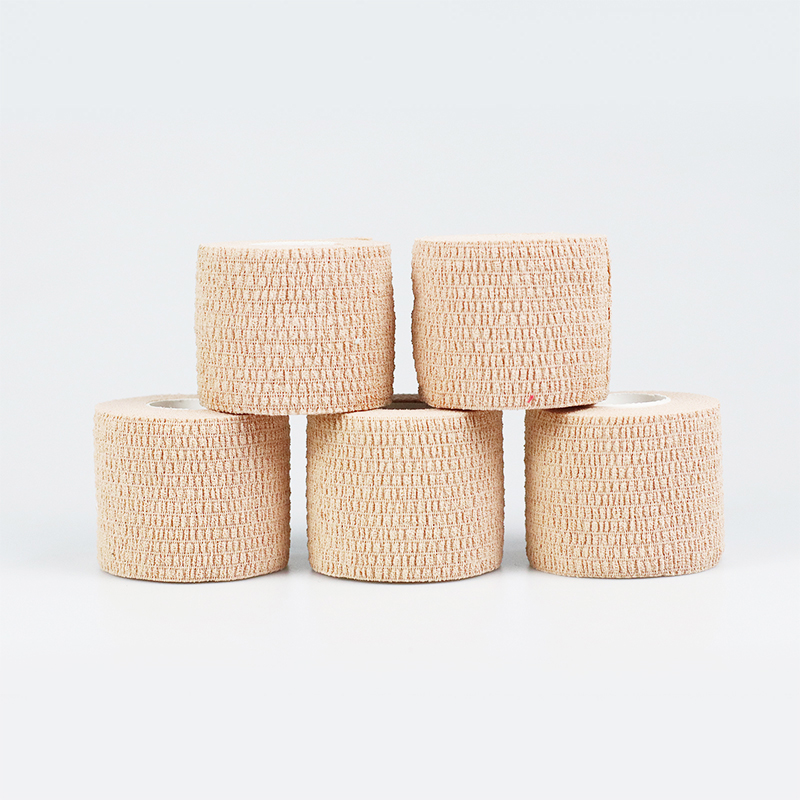Main Uses:
1. Joint fixation and support: Ankle fixation: Prevent and deal with ankle sprains, commonly seen in sports like basketball, volleyball, football, and badminton that involve frequent running, jumping, and changing directions.
Wrist/finger fixation: Used in sports like boxing, basketball, and volleyball to protect the wrist and finger joints from being poked or overextended.
Elbow/knee auxiliary fixation: Provides additional stability for conditions like tendinitis.
2. Ligament and muscle protection: By using specific wrapping methods, it can reduce the load on ligaments, tendons, and muscles, providing extra protection for weak areas.
3. Sports rehabilitation: In physical therapy, sports therapists often use it to help patients stabilize injured joints and perform rehabilitation training within a reasonable range.
4. Other uses: Sometimes it is also used to fix bandages, gauze, and other dressings.
Usage Method:
1. Skin preparation: Ensure the skin is clean, dry, and free of oil. For areas with a lot of hair, it is recommended to shave to avoid pain and reduced adhesion when removing. You can apply a skin membrane underwrap (sports bandage base film) to protect the skin.
2. Anchor point fixation: Wrap around the corresponding area once to create a starting point (anchor point).
3. Implement bandaging: Use specific wrapping techniques (such as horseshoe wrap, heel lock wrap, etc., for ankles) based on the desired fixation or support purpose. Overlap about half the width of each piece of tape.
4. Finish bandaging: End with another anchor point to ensure the tape is secure.
5. Check: After bandaging, check the tightness to ensure it does not affect blood circulation and that joint movement is restricted within the expected range.
White Breathable Ankle Support Athletic Sports Tape
Main material: Cotton
Adhesives: Acrylic adhesive, hot melt adhesive
Product color: White
Product Dimensions:
2.5cm x 13.7m, 3.8cm x 13.7m, 5cm x 13.7m
2.5cm x 9.1m, 3.8cm x 9.1m, 5cm x 9.1m
Customization of specifications is supported.
Core Features:
1. Strong support and fixation ability.
2. Good breathability.
3. Moderate and firm adhesion.
4. Easy to tear.
Wenzhou Zhusi Medical is a manufacturer specializing in personalized healthcare products. We specialize in healthcare, providing professional care solutions for clients in the fields of sports, medical care, personal care, animal health, tattoos, and beauty. Through technology and innovation, we strive to enable everyone in the world to enjoy a healthy and fulfilling life.
Our Mission:
We strive to achieve both material and spiritual well-being for all employees, spread love and health, and promote the accessibility of healthcare products to everyday families.
Our Vision:
To become a renowned company recognized by customers, respected by society, and ensuring employee well-being.
-
The sports protection and rehabilitation market has recently welcomed a revolutionary product: Precut Kinesiology Tape. This innovative upgrade from traditional roll-up kinesiology tape, with pre-cut ...
READ MORE -
Guided by the "dual carbon" goals, sustainable development in the medical industry has become an irreversible trend. Previously overlooked, medical waste — particularly disposable medical bandages and...
READ MORE -
Often known by brand names like Vetrap or Coban, this is a type of self-adhering bandage. Its key features are: Non-Woven: Made from synthetic fibers (usually polyester) that are pressed together, mak...
READ MORE

 English
English